25 Years at IBM!
I just recently passed my 25-year anniversary as an IBM employee at the beginning of August. Of course it’s hard to believe I have really been employed as a software developer for twenty-five years, but it’s true! To commemorate this occasion I used Twitter to share “25 memories” of my 25 years for the days leading up to my actual anniversary date. Given many people seemed to enjoy them, and the fact that they can be hard to find and re-assemble in the Twitter UI, I have replicated the twenty-five memories here for posterity. It all started with this tweet on July 7th:
Memory 1: {tweet}
An offer. In June 1994 I was back to mowing lawns in south Florida heat, having papered my bedroom door with rejection letters from every small hardware company I wanted to work for.
IBM had been a great experience as an intern–3 sessions over my 4 years of university working for different software labs in Boca Raton–but I wanted to work in hardware design, with no experience, in 1994 when “software was the future” of everything. But by late June with no other opportunities, I finally took a call from IBM who said “every manager you had at Boca had great things to say about you and we’d like to at least talk about a job offer.” Long story short I agreed to an August 1 start date, working in the OS/2 kernel performance team. I would make more money than I have ever dreamed of, and definitely more than my parents made at the time. (not everyone in America comes from rich parents, even if you are white) As you can expect, I’ve enjoyed many things about IBM to have lasted 25 years, and I’m definitely glad I “gave in” to talk to IBM that summer 25 years ago.
Memory 2: {tweet}
My first real software development role at IBM was on the OpenDoc team after about 9 months as an employee. OpenDoc was a joint project with Apple and our Taligent partnership. I learned a ton on this team about sw development practices.
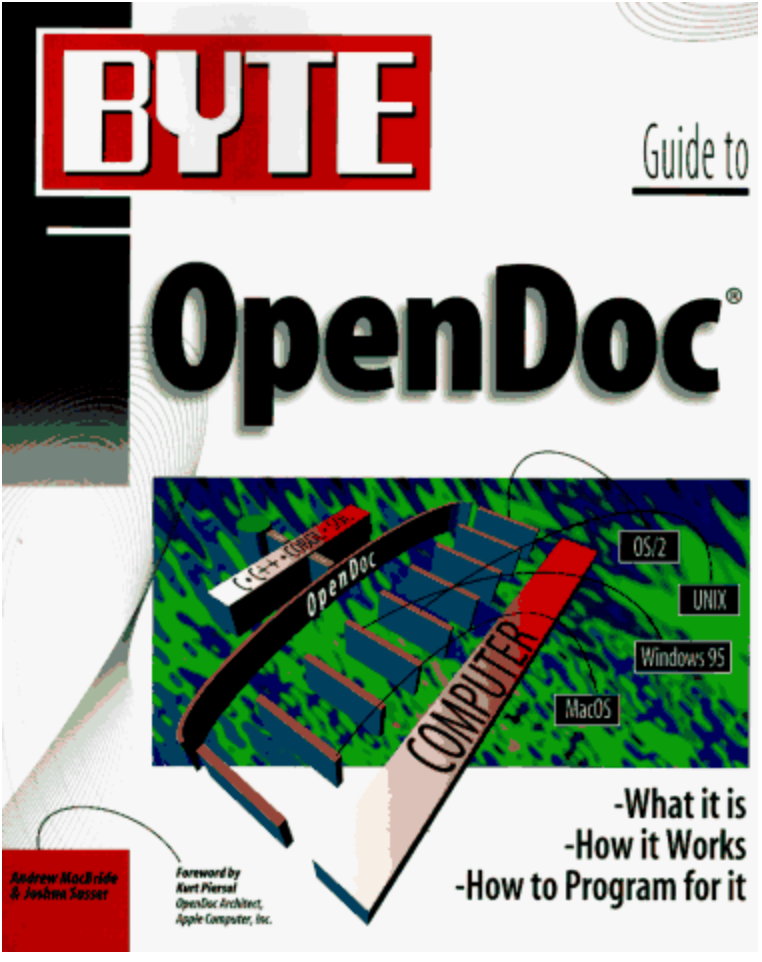
It included hard lessons like negative feedback on my code (I actually accidentally overheard a conversation between the team lead and project architect about one of my first code commits), and it forced me to really learn how to think about code and design. I learned the value of stepping outside the explicit “work assignment” to learn; I wrote a distributed chat app for OS/2 that I used with friends with the DSOM libraries we were using to build OpenDoc. Sure, CORBA was a mess, but it was a fun project and I learned a lot. Fun fact: It was Steve Jobs returning to Apple–long before any glorious future of Macs, iPhones, and iPads–that was the death of OpenDoc.
P.S. At some point pieces of the OpenDoc code base ended up on GitHub; you can see some of my changesets here. Yes, I’ve been “porting” almost my whole career (JVMs, Linux distros, etc.).
Memory 3: {tweet}
Editor’s note: Memory 3 landed on July 9th, the day of the IBM – Red Hat acquisition deal close.
Today’s memory just had to include @RedHat, so let’s talk about Java on Linux…back in 1998 and 1999. I was already an avid Linux user and had Linux installed on a PC in my office at IBM Austin.
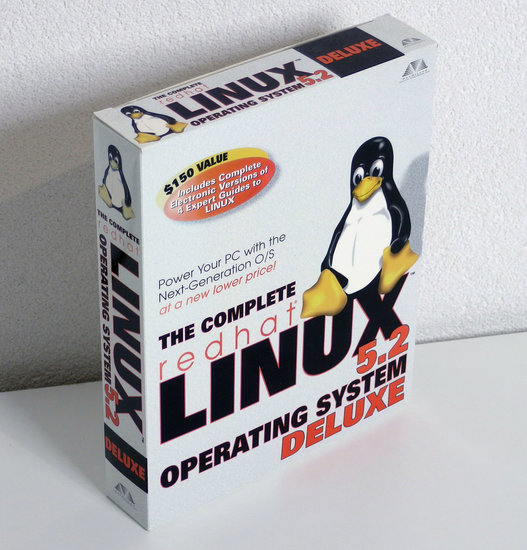
We had already been a Sun Java source licensee and ported the JVM to OS/2, and then made a Windows variant with our own JIT and performance improvements. Now someone asked if we should do a Linux port, given our newfound interest in Linux at IBM. Long story short: I was handed the skunkworks project with one other developer (from the JIT team at IBM Tokyo research) to port the existing JVM codebase to Linux. My manager purchased a “real” boxed Red Hat as legal wasn’t sure if my downloaded Linux install was “kosher” :) I had a Sun Ultrasparc on my desk, an AIX workstation under, and my Linux and OS/2 boxes (this was when I got labeled as a hardware hoarder) and effectively did a 3-way merge of the UNIX-like codebases of AIX and Solaris and our x86-based Win & OS/2 ports within a couple weeks. This “2-week sprint” (before anyone talked about sprints) became the basis of our JVM 1.1.8 on Linux that was announced by IBM execs at JavaOne that summer, and beat Blackdown in performance and beat Sun with their own Linux port of 1.2 a bit later.
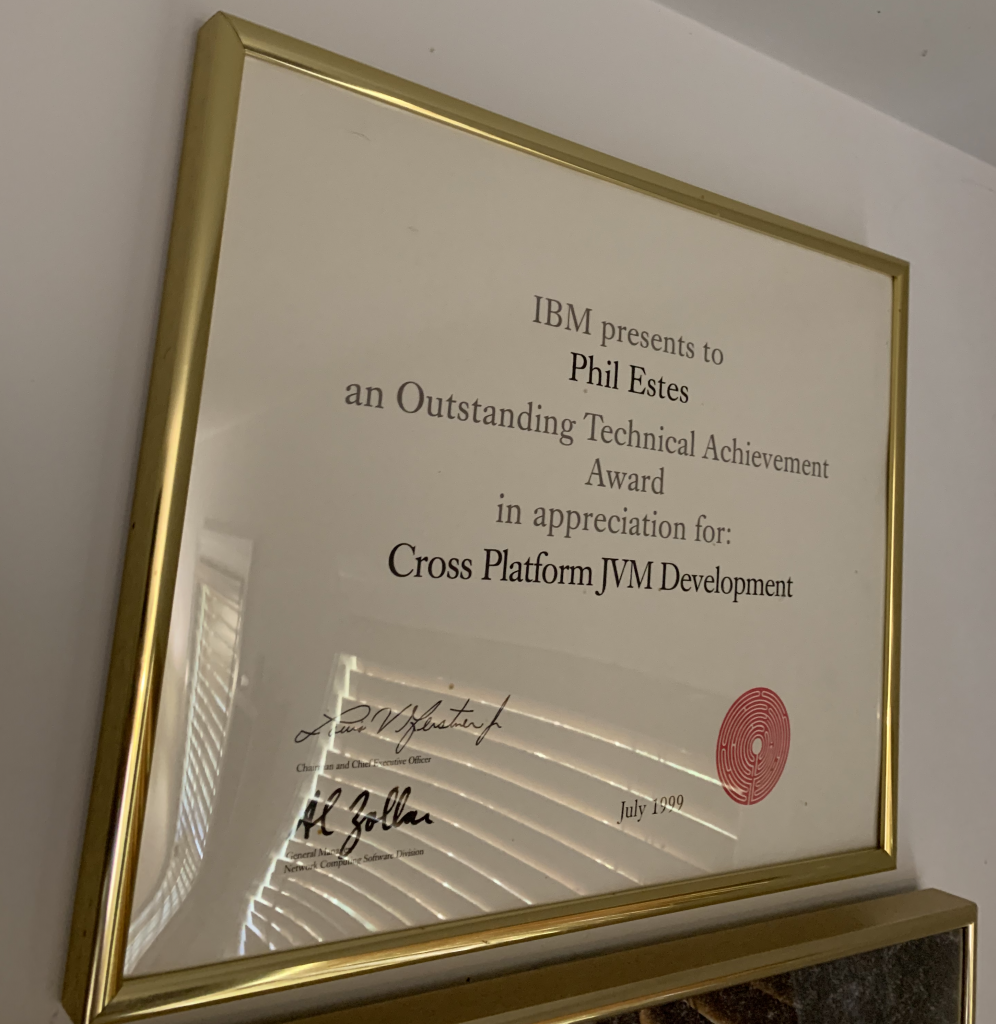
It was a big achievement at IBM and won me my first Outstanding Technical Achievement Award in July of 1999 that still hangs on my office wall today.
Learnings: open source licensing and distribution (the AWT linked to libmotif.so on AIX/Solaris, and we ended up distributing a binary of licensed Motif in our JVM package), working across the globe (the Toyko JIT developer and I were in opposite timezones!) And thanks to Red Hat for the distro and development platform that enabled my work and led to a successful IBM JVM on Linux in 1999.
Memory 4: {tweet}
The “I’ve Been Moved” experience—Boca Raton to Austin Texas! Less than one year into my career we got the news IBM would be closing the Boca site and offering to move us to Austin, Texas.
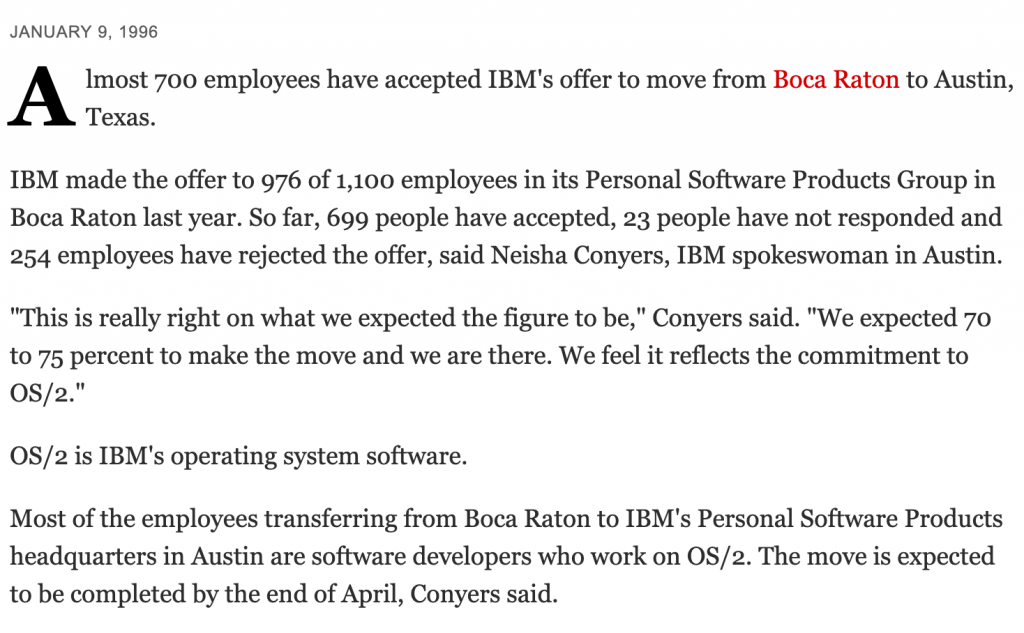
As newlyweds and with no ownership of anything in south Florida, my wife and I were excited for the new opportunity, although we did look around to see if we wanted to stick on the east coast or try out this crazy city in Texas. In the end we loved our five years in Austin, Texas, although I could have done without the heat! :) The “survey trips” were pretty crazy—full chartered flights of IBMers being treated to the best of Austin for a weekend. Our first halloween on 6th street. Austin is still a thriving IBM location today, and I still enjoy visiting the site and driving around the city to memorable locations—like the first home we owned and where our first two children were born.
P.S. Can you imagine researching a new place to live without Google?? We did have “Yahoo! Directory” and, yes, we had web browsers in 1996. I created a web form internal to IBM for IBMers to ask questions about the move–I think it was backed by a Perl script in cgi-bin 🤓
Memory 5: {tweet}
Recently @DustinKirkland asked people to share “first biz. trip” experiences. My trip to Istanbul, Turkey in 1999 always comes to mind. It might officially be my 2nd; I think I had one uneventful trip right before that to US Bank in MSP. I had built expertise in the JVM (as you might imagine from memory #3 a few days ago) and was getting called to help customers with hard JVM problems. In this case Yapi Kredi Bank in Turkey was working with IBM on a Mozilla-based teller system using Java applications. I know. Equal parts excited and scared as a very young developer, I got called into a VP’s office and was told I needed to go to Turkey immediately and that my main job was to make the customer understand IBM cared and was sending their best to help solve the technical challenges. Craziest part: arriving in a very foreign place; a guy is holding a sign with my name, speaks no English, and then proceeds to drive me for over an hour to the far eastern part of the city to YKB headquarters. No phone/Google maps; nothing to verify I wasn’t just kidnapped. 😂Humbling reminder we have no control and sometimes are very lucky & blessed: 6 days after I return home on August 11th, there is a massive earthquake in Turkey, killing 10s of 1000s and causing considerable damage in Istanbul.
Memory 6: {tweet}
Let’s do a funny one for today, although it might be going back to before I was a full-time employee. Summer interns were “supplemental” IBMers and therefore had to fill out a timesheet–on a mainframe. 🤓
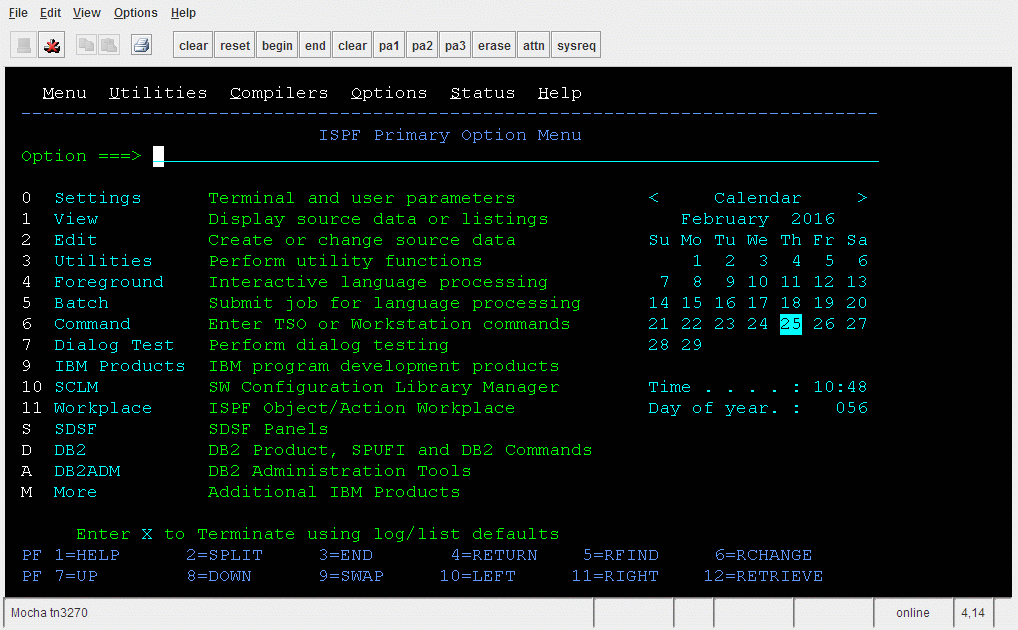
The IBM workday at the time was from 8:00am to 4:42pm. Why 4:42? Because the day was divided into 6 minute increments, and lunch was 7 increments–so 42 minutes. To work an 8 hour day meant working until 4:42pm with 42 minutes for lunch. 😂Being at the Delray Beach offsite campus meant we had no cafeteria in the building and mostly went out to lunch. The local IBM regulars had implemented an (un-official) “ELP”: Extended Lunch Program. By the time we drove somewhere and got lunch it was easily over an hour. But it was the busy days of OS/2 and most people weren’t leaving at 4:42pm–so the hour (and a half?) lunches of the ELP were well within working an 8 hour day. By the time I worked at the main site in later summers, dinner was being provided on-site to deal with the long hours!
Memory 7: {tweet}
Another early business trip (1997?) led me to IBM Hursley, UK, and it’s become one of my favorite sites to visit to this day. I spent two weeks there doing a rotation in our “Java Technology Centre” (JTC) which was based in Hursley.
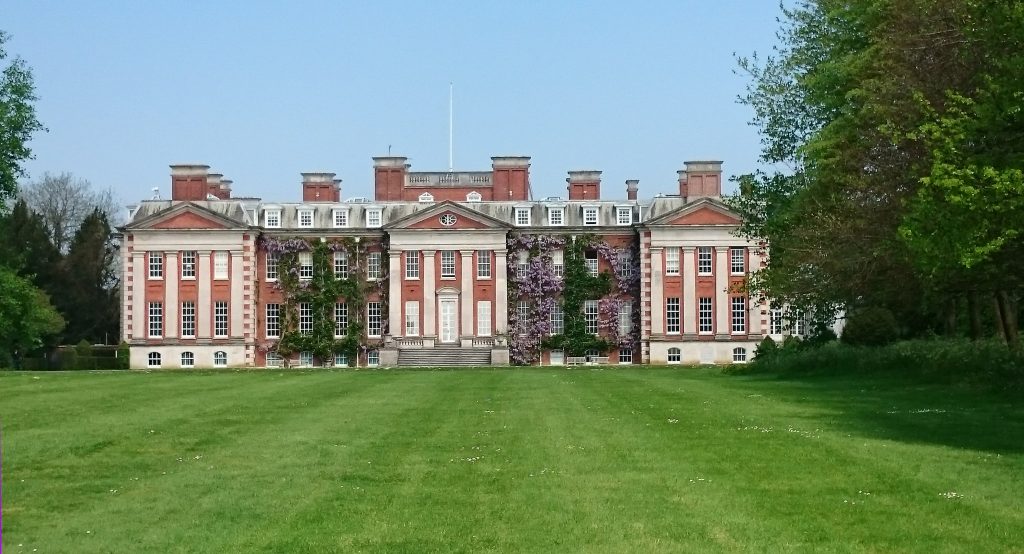
While most IBMers do not work in Hursley House (the beautiful 18th century mansion), the grounds and setting, just over an hour SW of London, are peaceful and beautiful. I still enjoy going to Hursley today, and it reminds me of my 2 great weeks there in my first big project.
To local IBM’ers it might just be a place to work; visitors don’t experience “real life” in any place they visit short term, but I’ll always jump at a chance to visit the site. It’s an easy train ride from London or rental car from LHR! More info on Hursley House from Wikipedia. As a bonus, Winchester, the nearest city to Hursley, has a nice green and cathedral and walks along the River Itchen are really beautiful.
Memory 8: {tweet}
A lot of IBM memories involve people. At the risk of leaving some great people out I’m going to highlight a few special friends and leaders who have been huge in my career. First is Alex @tarpinian, a colleague, manager, friend, and mentor. Alex gave me my first significant promotion around 2000, to “Advisory Software Engineer”; he had already been my manager on a project several years prior and was now managing me again. Alex was a great manager and friend who gave us all opportunities for growth and promotion. After almost 25 years we still work in adjacent areas and still get to interact now and then, and I see Alex as a person I have turned to many times across the years for advice and opinions, and as a sounding board regarding decisions I’m making. He graciously allowed me to seek out an opportunity back on the East Coast in 2001 when I told him that as a family decision we wanted to be closer to our extended relatives—he could have made it much harder, and yet he helped make it possible at a loss to his team. Thanks Alex for all your help and support across the years!
Memory 9: {tweet}
Thanks to the prodding of another early manager and friend, @keithfinley, I decided to apply for the Master’s program at @CockrellSchool of Engineering at @UTAustin in 1996. I worked full time and joined the “executive” program for 2 years.
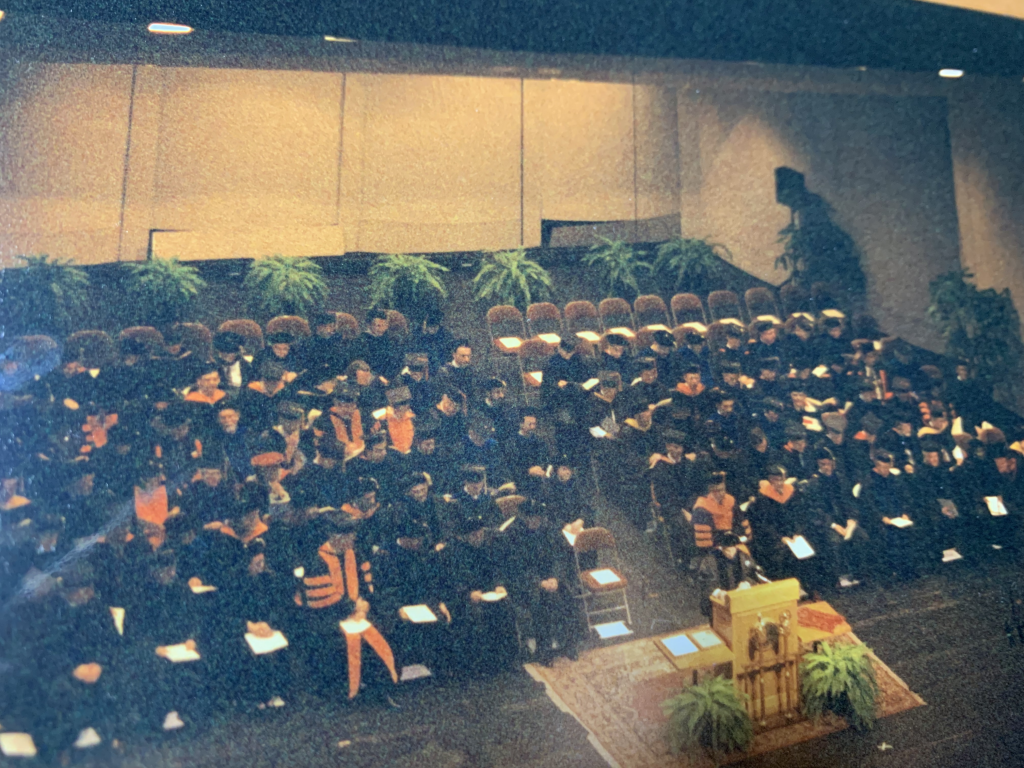
I always say my Master’s was a great value not because I learned specific technologies or software engineering methods, but because it forced me to grow my presentation and communication skills, as well as the complexities of team-based exercises, which were extremely common.
It also gave me a fascination with compiler technology and ASTs due to a specific class sequence, and I ended up writing a Master’s thesis on the static analysis of Java code, which included an implementation. Yes I used TeX to typeset my thesis. No I don’t have the source :(
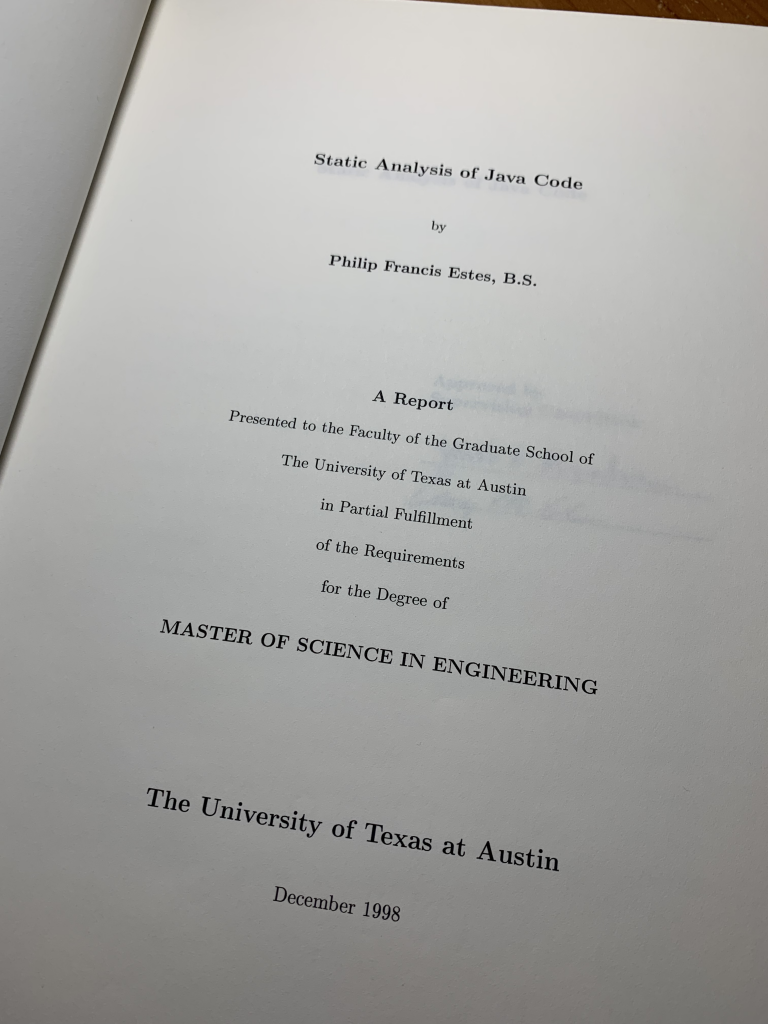
It was definitely a privilege to receive a Master’s degree, and IBM has changed in that I don’t think this benefit exists today, but I’m really glad I was able to take advantage of the possibility at the time, and I know it has positively impacted my career through the years.
So within 3 weeks in late 1998 I became a dad for the first time, and received my Master’s Degree. 😎 Bonus: I became a Longhorn for life. Hook’em horns!🤘
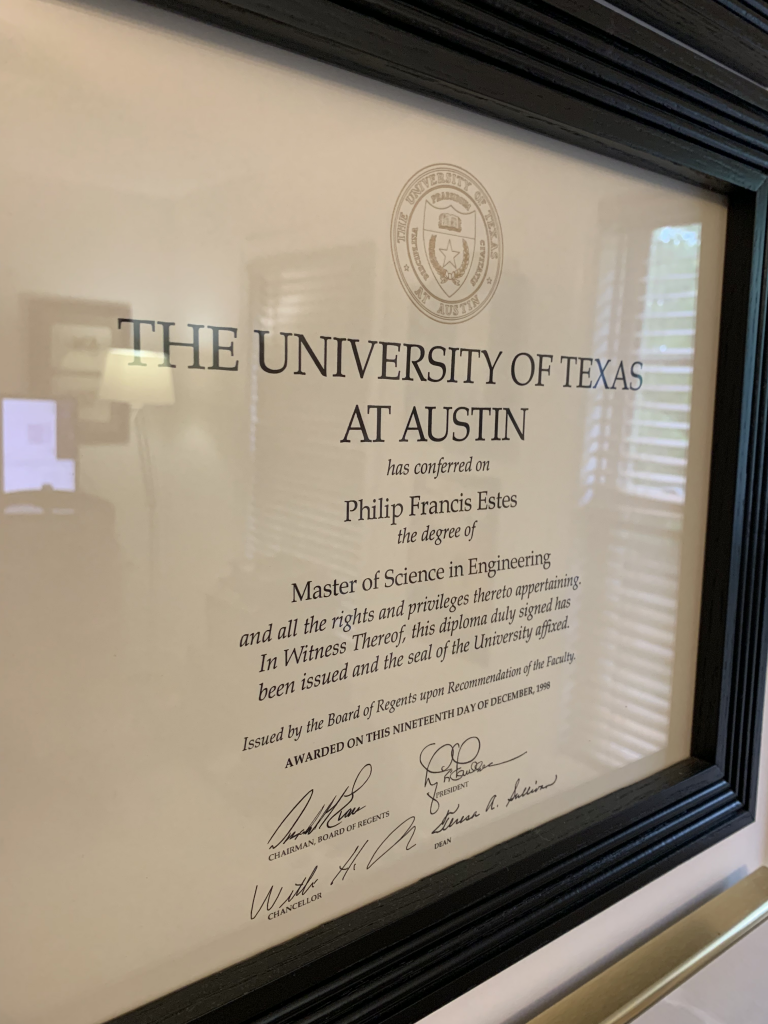
Memory 10: {tweet}
I spent the largest portion of my career in IBM’s Linux Technology Center or LTC for short. From 2003 to 2013 I had the privilege of taking my love for, and use of, Linux and actively working with Linux distributions for my day job.
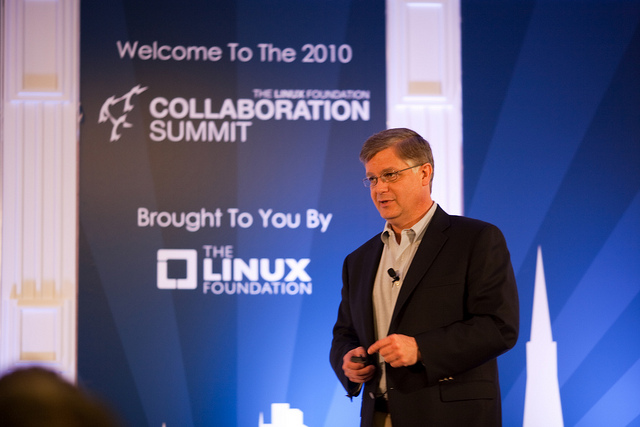
Dan Frye, LTC founder & exec, pictured here, led the group for many years and I’m privileged to count him as a mentor and friend. The LTC represented a transitional moment in IBM history–while open source wasn’t new to IBM, commitment & investment in OSS dramatically increased. Some LTCers have moved on to other roles outside IBM in later years of the group, but we had an amazing group of Linux devs. I don’t think I can even list all the awesome people I worked with: @DustinKirkland, @anliguori, Scott Moser, Serge Hallyn, Paul McKenney, and many more! I had some great mentors and managers during those years: Randy Kalmeta, Barb Wang, Joanne Guariglia, Kathy Bennett (took over VP, LTC from Dan Frye), Sheila Harnett, Steve Best, among others. My promotions to Senior SW Engineer and STSM came during my LTC era.
More info on the LTC from the early days (founded August 1999) from IDG’s IT World, developerWorks and Wikipedia.
Memory 11: {tweet}
I hope every IBMer has a chance to visit an @IBMResearch site during their career. My first opportunity came in 2000 when I visited IBM Almaden, perched on a hill near San Jose. I was working with a team of researchers on a tuple-space implementation.
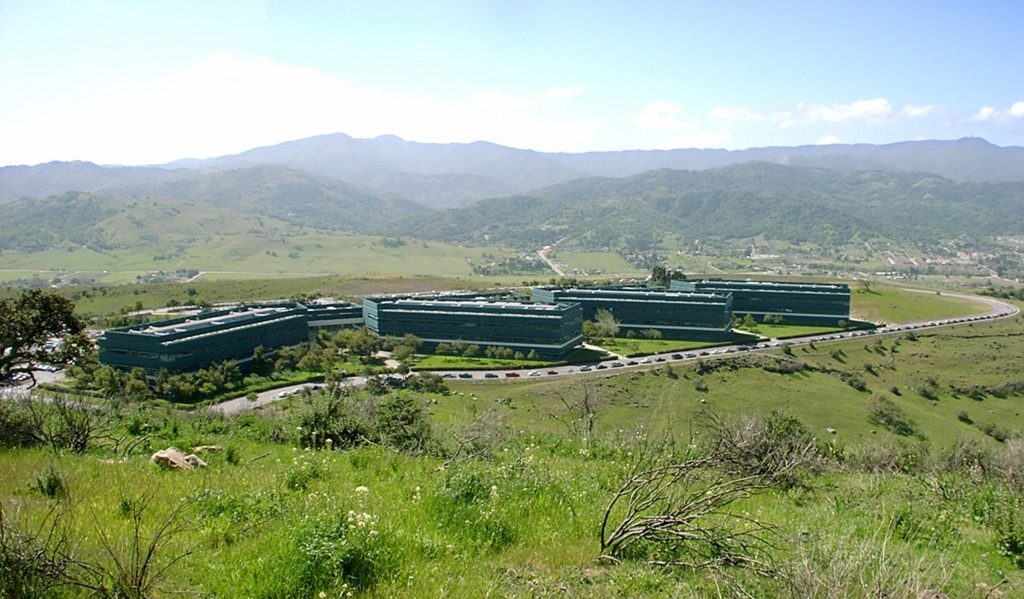
There is something impressive about our research sites—a history of inventions across so many disciplines, and ongoing research in all kinds of interesting fields. Where else do you see real lab equipment in an IBM office building!? I remember walking past T.V. Raman’s office–the creator of emacsspeak, as he was at Almaden during those years. His computer was reading his screen to him at an amazing rate! Years later I would also get to visit the T.J. Watson Research Center in Westchester County, NY, and have been many times since. With the advances in Quantum Computing and the creation of @qiskit coming out of Watson, it’s an exciting place to visit as well.

With the commemoration of the Apollo mission 50 years ago, it’s amazing to work for a company who was deeply involved in placing people on the moon, and are today working on everything from Kubernetes to Quantum computing, powered by significant research communities worldwide.
Memory 12: {tweet}
Working with IBM’s Linux distribution partners and Linux distro packaging within the LTC for a decade, I had one interesting “side job” added to my career activities in the 2000s: handling Linux use due diligence for acquisitions! Sometimes I wasn’t part of the official due diligence team; other times my team merely handled remediation of distro sourcing and usage post-close, but getting to actively participate in M&A activity was a learning experience and fun diversion from my usual tasks. Anyone worth their salt in the 2000s had a Linux-based appliance (especially storage and network acquisitions) so we had plenty to do during that decade! Ones I can remember participating in: Storwize, Diligent, Netezza, XIV, Guardium, Cognos, Datapower, Internet Security Systems (ISS), FilesX, BLADE Network Technologies and Nitix Server. So many interesting Linux “hacks” and configurations across that group, including interesting CPU/arch combinations in some cases (for management devices..MIPS, SH-4, ARM, etc.). It was a fun exercise to see how each was assembling, using, and managing Linux for their products. While most of those experiences are almost 10 years old now, it gave me a depth of understanding in the merger/acquisition process I never would have known, and many friends across a long list of acquired companies that I still talk to today.
Memory 13: {tweet}
Sometimes it pays to have a really old email archive :) I was trying to remember my first open source contribution. Even though I worked on Linux in the LTC, I wasn’t really tasked with upstream development as a main part of my role. But, in the matter of course of building and laying down distro images, every once in awhile I found something worth submitting upstream. In this case it was a minor issue with my particular partition mount setup and the time zone tools packaged with libc. This is from November 2005:
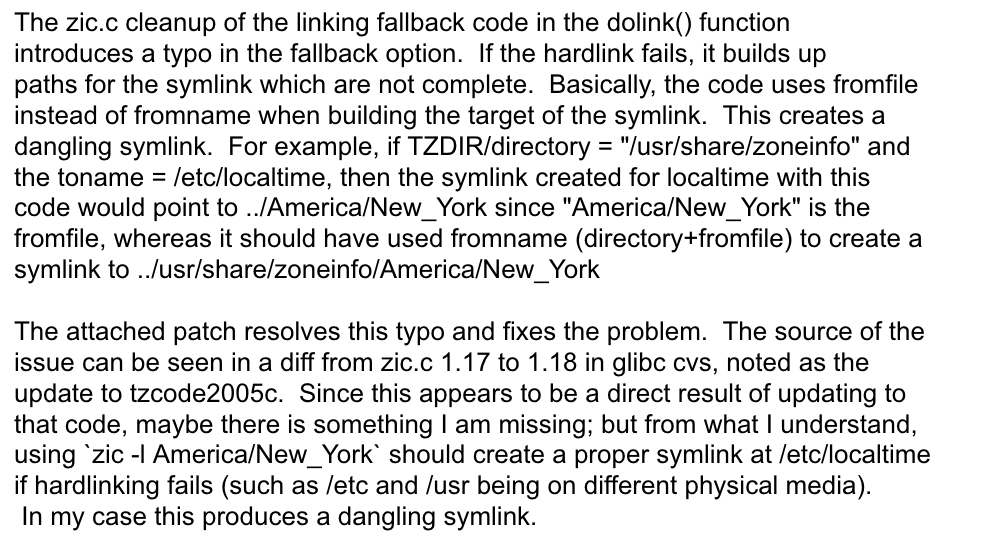
I attached a suggested patch to the bug report. You can read volumes online about people clashing with Ulrich Drepper (sort of like the Linus for glibc) over the years, but I got this very anticlimactic response; and with zero fanfare my first real upstream patch was merged. 🎉

Memory 14: {tweet}
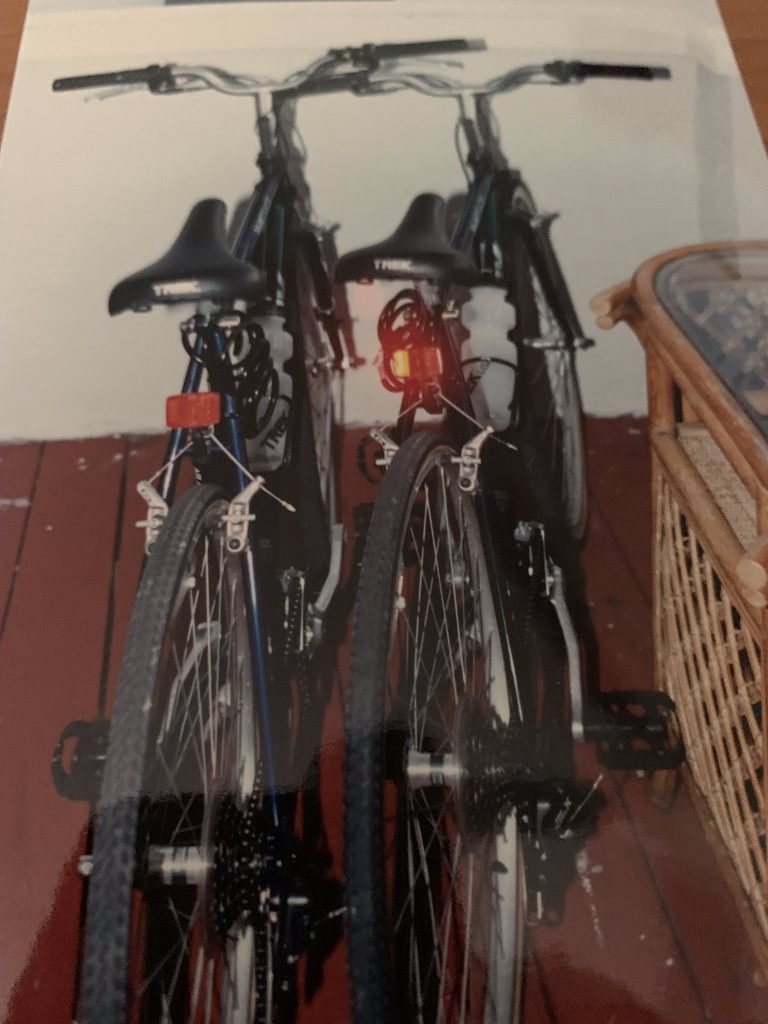
In my first year at IBM my wife started working at IBM also. After getting married and settling into an apt. in Delray Beach, we went out and bought brand new Trek hybrid bikes. Soon after we decided it would be fun to ride to work together.
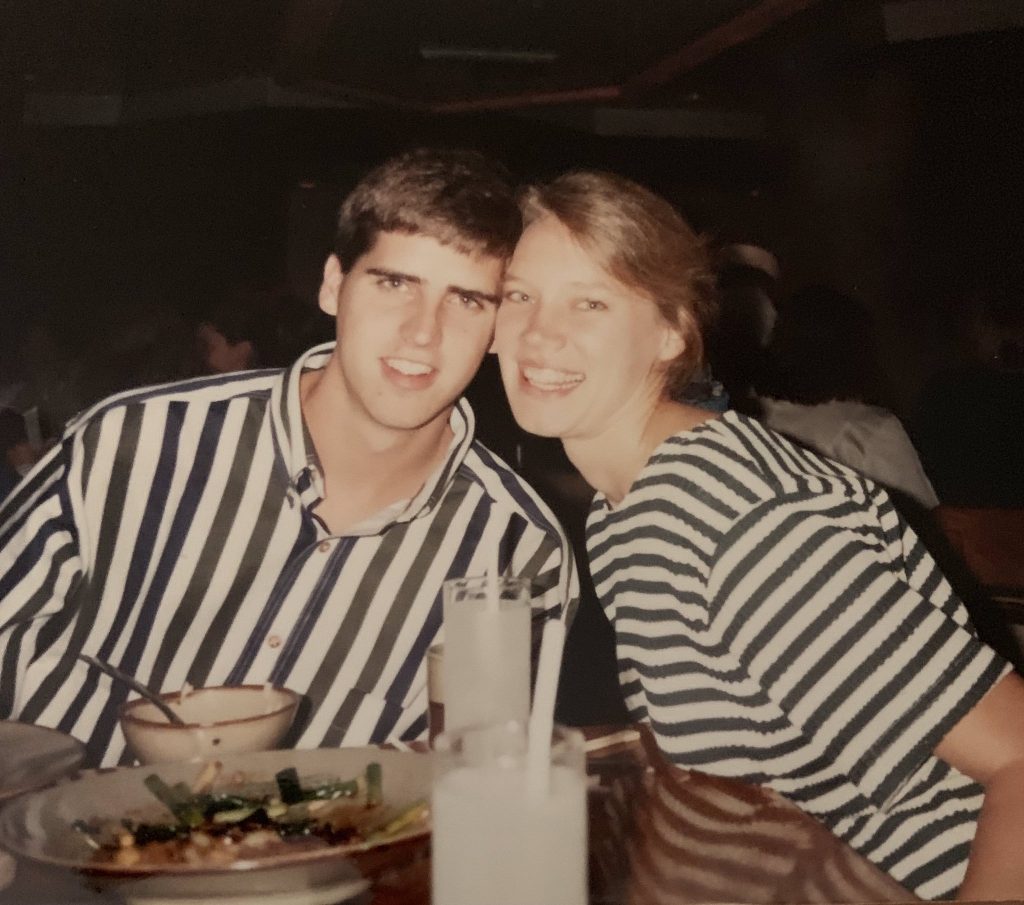
It was winter in Florida, so we weren’t sweating to death, and it was kind of fun to have a leisurely ride to and from IBM each day. One morning, however, our handlebars got a bit tangled while riding side by side (and maybe me doing something silly 😇) and we both went down!
We were close enough to IBM to finish up our ride, but had some cuts and abrasions that were bleeding pretty well by the time we arrived! We must have looked hilarious walking into work like that. Thankfully IBM still had a medical office on site and we got patched up easily.
The good news is we are still riding together after all these years! We’ve done everything from sprint triathlons to a huge 2018 trip from Munich to Venice by bike. We even rode 13 miles around our local community this morning. 🚴🚴🥇❤️🚲
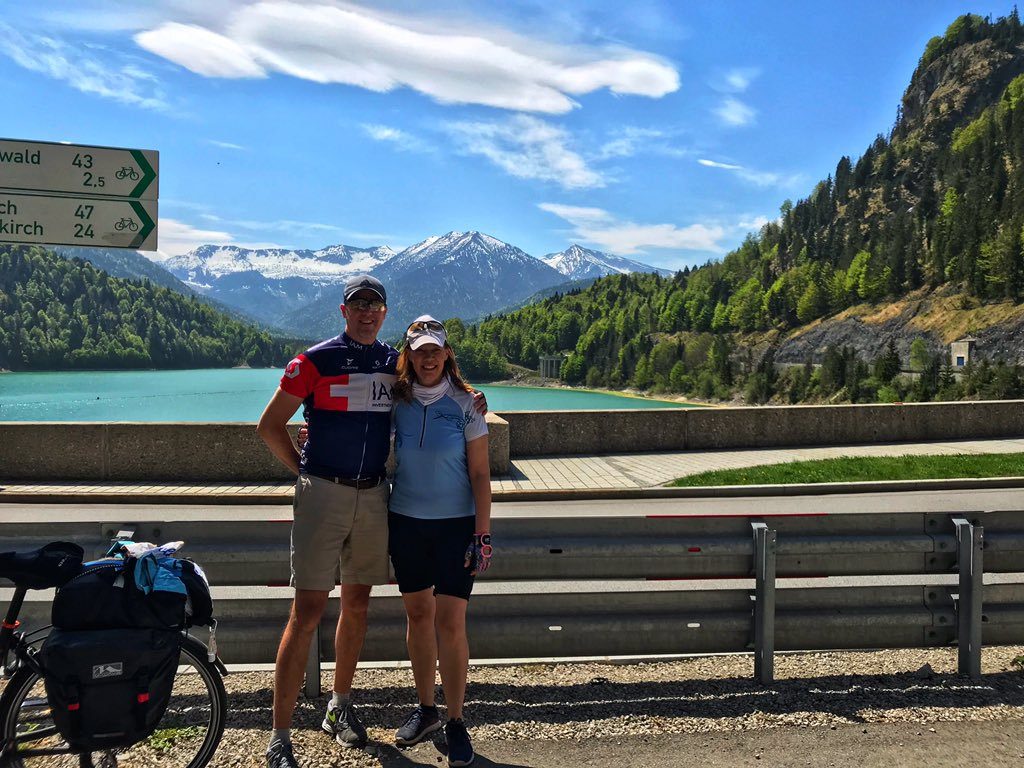
Memory 15: {tweet}
Regular international travel has only been a recent part of my career experience, but working “around the world” has been something I’ve experienced regularly, given IBM has employees in almost every corner of the world. The richness of getting to work alongside IBMers from many cultures has been an awesome part of these 25 years, and the more recent possibility to see them face to face has only heightened the reward of working globally. Having someone proudly show you their city, sharing a traditional meal with a colleague, or simply finding out the “sameness” of life experience even across continents through conversation has been a rich addition to work relationships over the years. I’m also thankful for the opportunity to see life outside of my American-centric experience, learning about other cultures, traditions, and life experiences. Expansion of my “work relationships” to open source communities has added even more opportunity for this recently! Here’s hoping for more opportunities to eat, talk, and enjoy work and life with people from every corner of the globe! 🌎
Memory 16: {tweet}
It’s a Monday. By simple calculations, I’ve probably spent 1,100 Mondays at work since 1994. And Mondays are a good time to remember that work isn’t always exciting, thrilling, or even fulfilling every moment of every day. For whatever reason Monday gets a bad rap, it’s a good day to remember that many days out of 25 years have no highlight or notable accomplishment, or were even enjoyable in some way. Work is like that, and there were times I’m sure I wasted time I could have spent meaningfully. But, slogging through slow days; deciding to attack a random problem just to dispel boredom with the day-to-day; or simply going to your lead or manager and asking for something to do is all part of a long-term career in any field, I assume. I’m pretty sure I learned some meaningful lessons in the “non-notable” days, weeks, and months over 25 years. I definitely learned to press on, even through some not-so-fun assignments, and they usually led to new opportunities or at least a growth experience. So, happy Monday out there. Keep slogging along and reach out for help if you need to; better times are ahead, even if it means stepping out of your comfort zone and finding something new to do!
Memory 17: {tweet}
Another fun side project early on: someone built a PE (binary) loader for the OS/2 kernel, and we were thinking we might be able to run Windows binaries on OS/2 if we could map the Win32 syscalls to OS/2 libraries. I was between my OpenDoc assignment and the formation of the Java porting team, and was assigned to help @gfxman & @mikebrow with this experiment. My test binary was the Borland C/C++ compiler for Windows. I was basically working through the core Win32 calls and DLLs one by one, mapping them up to OS/2 calls and then trapping which ones were still being called and needed wired up. I was so close to having the compiler actually working before the experiment ended. As an aside, did you know that as late as Windows NT you could still run OS/2 binaries natively on NT? The base OS/2 DLLs were part of the NT install, and character mode programs could run successfully, IIRC. This short exercise didn’t lead to much, but it was a great chance for me to learn the intricacies of object linking/loading at a low level, which would come in handy later when I wanted to dig into ELF on Linux and understand libc, ld.so, & cross-toolchains.
P.S. Kelvin (@gfxman) was a great early mentor in my career and someone I always looked up to. And who knew I would be working with @mikebrow again 20 years later on @containerd and OCI container stuff!
Memory 18: {tweet}
My first conference talk was in November 2000. I was asked to represent the tuplespaces work (from IBM Almaden–a prior memory) at a historically OS/2 conference that had become Colorado Software Summit by this era. I had never spoken in front of more than a few people in my department, or during presentations during my master’s program by this time. I had all the experiences you would expect a new speaker to have–dry mouth, talking super-fast, forgetting half of what I wanted to say. 🤣 I’m pretty sure it was a train wreck, and I actually had to give it twice (it was a conference expectation at CSS)! But everyone has to start somewhere, and that was my humble beginnings to public speaking. Sorry if you were there! 😇 I hope I’ve improved since then! I had a long break since my LTC role didn’t provide opportunity for external speaking, but I had many opportunities to speak and present regularly to internal audiences that helped prepare me for re-entering the conference world in 2014. Since then I’ve had at least 50+ opportunities to speak the last 5 years, and every experience teaches me something. I also try and learn from great speakers like @lizrice, @kelseyhightower, @bcantrill and others; all the while realizing in many ways I’ll still be “me.” If you get the chance to speak and are interested, take it! I’ve seen so many amazing first-time speakers in the last several years. Many of them thought they couldn’t do it, or wouldn’t be any good. You won’t know until you try! Oh, did I mention it was a family affair? At Keystone Resort at the beginning of winter. Fun times–it started on DST weekend, so our oldest got up at 4am the first day if I remember correctly. 😅 I also ended up with a major cold/sinus infection out of the trip, but hey.

Memory 19: {tweet}
I still clearly remember the first day I visited the @Docker SF office on Sansome in 2014. I even remember waiting at a Starbucks around the corner for @jrmcgee and @cloudtroll so we could walk over together. There was a couple purposes for meeting, and mine was finally meet these crazy open source maintainers at Docker I’d been hanging out with for a few months online on IRC and in the Docker project on GitHub. It had that first day of school awkwardness at first 😂; there was @jessfraz & @crosbymichael, @LK4D4math & @vieux; all people I knew online but had never seen in person before. I think we went out to lunch, and I met a few others from the team, and saw @jpetazzo in the lobby. This group of people, as well as others who came along later (@icecrime, @derekmcgowan, @cpuguy83, @stevvooe) were all instrumental in greatly improving my Go skills (I was new to Go in 2014), bringing me on as a maintainer, and helping me be more effective as a contributor. More importantly, the friendships that grew out of that maintainer group I expect will last a very, very long time. As @jessfraz tweeted earlier, there are special teams that you will always remember, and this is one of them! So thankful I still get to work with a few of them!
Memory 20: {tweet}
Becoming a remote employee. In 2006 I moved home, and more specifically, geographically distant from any IBM office. I’ve just passed spending half my 25 year career working out of my house. 12 years in traditional offices, 13 at home. Thanks to the flexibility of the LTC organization at the time I moved home, there was no pushback at all. It was a personal and family decision, and I had the full support of my management. After 13 years at home, I can say I’ve acclimated pretty well to this mode of work. I’m sure it isn’t for anyone, and there are definitely some downsides, but IBM as a whole works globally in so many cases now that there is never one perfect spot for someone in my role to be located. Most of my calls include people from at least 3 or more timezones every day. At this point I would not want to give up the flexibility for home/life “interruptions” with a busy family, as well as the efficiency of no transit/commute and the ability to focus well when I need to be totally disconnected. It also has made me immune to all the changes in office trends over the past decade; I have the setup I want with plenty of light, a door I can close, and a stocked kitchen that hopefully rivals most startups. 🤣Working at home has made travel more worthwhile because total disconnection from face-to-face communication is not healthy long-term. I like the cadence of “busy week on the road with friends/colleagues/open source people” followed by “quiet week getting things done at home.” When I hit my 10 year anniversary of being in my home office I wrote up my thoughts then. You can check it out on my personal blog.
Memory 21: {tweet}
People. So many people over 25 years have had some form of influence on my career and I could never list them all. However, there are very few people I’ve known since the first day I walked into IBM (as a college student intern) until today. Mary Jane Delaurentis is one of those few people; she was my manager in OS/2 System Test during one of my early internships (probably Summer 1991). She was a good manager and mentor to her employees. She was kind, but also tough, and pushed me to succeed at whatever I did. We didn’t interact as much years later; I believe she ended up working in Software Group HQ in a strategy role, and later retired from IBM. But we connected on Facebook and for years now she has continued to cheer on my successes and follow our family through many stages. Whenever I think of the best managers and mentors in my life, I always think of Mary Jane Delaurentis. She’s not on Twitter, but she’s on Facebook quilting away in her retirement and enjoying life, and I love that we get to still interact in each other’s lives. Thanks Mary Jane!
Memory 22: {tweet}
It’s a Sunday and we just started a short family getaway–so memory 22 almost didn’t get posted on the 22nd day 😅 But it reminds me that my career has had some tough deadlines, some long hours, but rarely any extended period of imbalance. Rather, I’ve felt very comfortable for 25 years using most or all of my vacation time and rarely if ever needing to work on weekends. In fact, if I do, it’s usually because I can’t let something go or have an interest to finish something; not due to actual management pressure. I’m thankful that IBM has a focus on work/life balance, and every manager of mine has been extremely sensitive to family needs and special situations that required more flexibility in work hours. I know not every corner of IBM is like this, but that’s been my experience. Hope you all had a great weekend!
Memory 23: {tweet}
Most of my career has been behind the scenes; operating system plumbing; JVM plumbing; Linux plumbing and images: 10+ years where my “customers” were IBM product teams and newly acquired companies. No conferences, no external blogs, nothing. You can imagine how significantly my career changed when I was asked to get involved with this “new Docker thing” in Summer 2014. Everything was external; everything was open source; all my work was public, and it was on a platform that was being used by developers everywhere! It’s been a very new twist to my career, but an insanely fun experience to work a majority of my time external to IBM: with communities, foundations; with people from around the world working at various startups, universities, tech giants, and everything in-between.
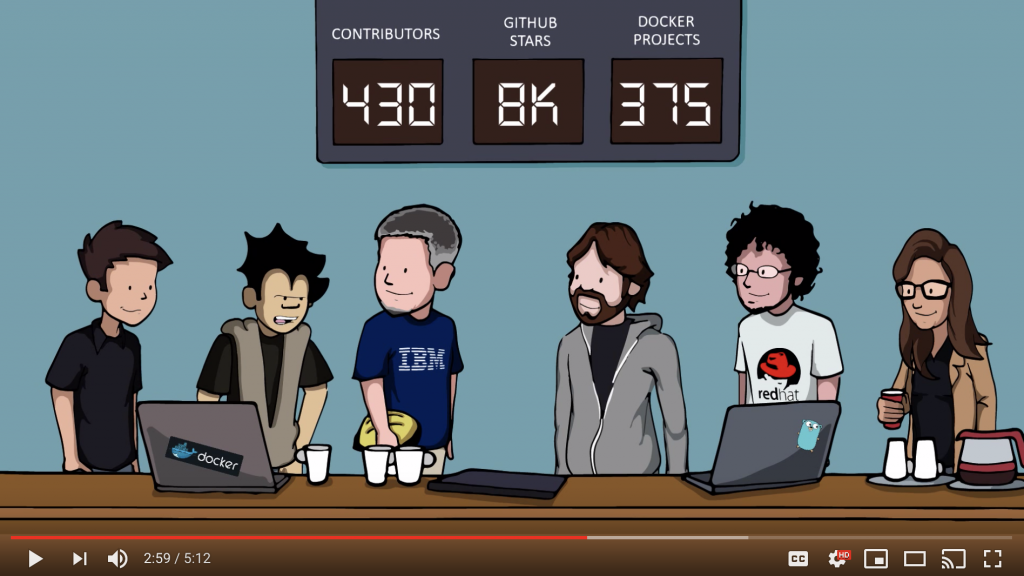
Maybe the wildest experience of this season of my career was to be a character in the opening cartoon to the 2015 DockerCon in SF—which highlighted the growing open source community around the Docker project. The 2 coffee cups, my bike helmet, the IBM t-shirt–it was perfect! To have it reprised again a few years later when @jrmcgee gave an IBM keynote at the DockerCon in Copenhagen was fun as by then I was a Docker Captain and many of them had never seen the original cartoon.
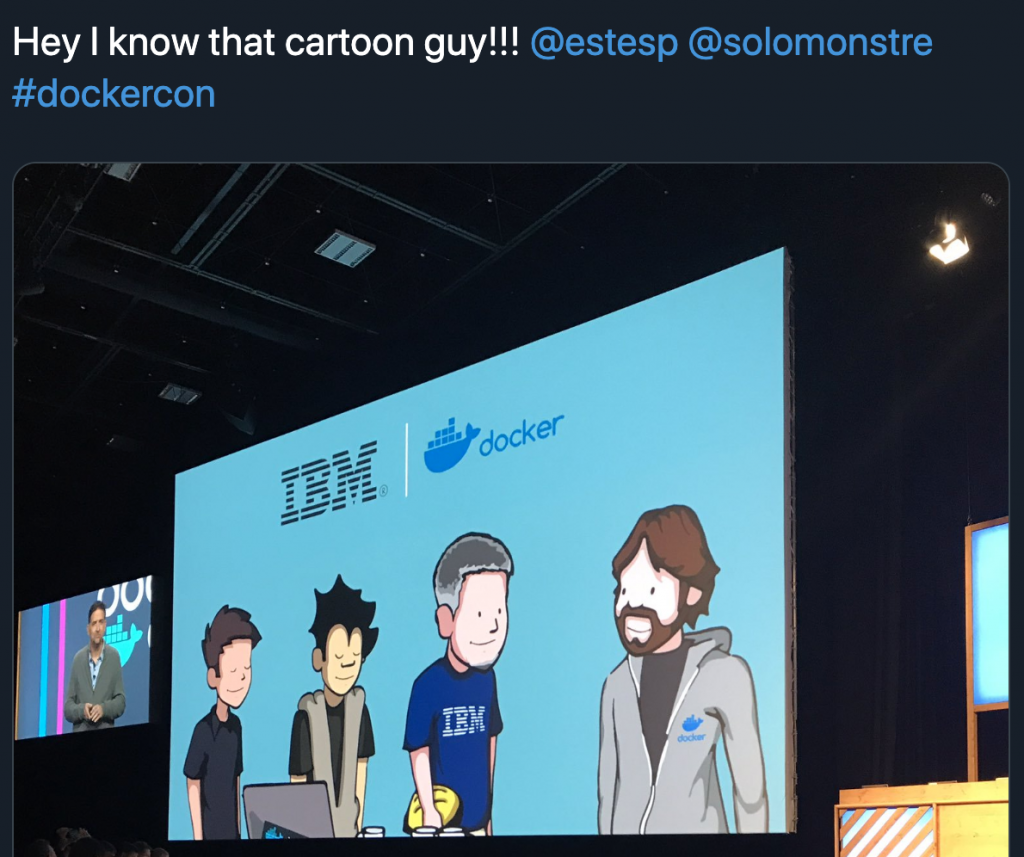
So, I’m not sure I’ll ever be in another cartoon, but it’s been a wild ride from “behind-the-scenes guy” to an externally active open source maintainer and speaker. I truly enjoy the friendships I’ve made worldwide, and all the places I’ve been able to visit thanks to this role. As much I as love helping others at IBM get involved in open source and become externally active now, I’m afraid my answer to “how did you do it?” was “I was asked to go figure out this Docker thing in 2014, and it just all happened!” Here’s the link to the complete 2015 DockerCon opening cartoon.
Memory 24: {tweet}
It’s starting to hit me how long 25 “tech” years are; just how massive the changes have been. No one was thinking about smartphones 25 years ago. No one had a “macbook” let alone a laptop. Devs were longing for 8MB RAM–M. 486DX was cool. For a fun memory lane experiment, I tried to think of all the environments I developed in–of course OS/2; Windows for awhile; Linux for a long time. I had Solaris and AIX “desktop” machines for awhile. I used VM (s390x) and installed Linux on mainframes using “IP CMS” commands. I’ve done 3 tier webapps with XML in DB2 with XSLT, Java applets, and Java backends. I’ve written 1000s of lines of automation in Perl and bash, C and C++ code for Linux, OS/2, and Windows. CSS, HTML, SQL, and even Lisp (Master’s Degree classes); M4 (macro), Make, x86 ASM.. Golang has dominated the last 5 years of my career, including working with Linux at the syscall level. It’s been quite a journey, and the great thing is that there is always something more to learn. I hope I keep learning and adding to my personal list; any recommendations?
Memory 25: {tweet}
By the calendar, today marks the last day of 25 complete years at IBM, making tomorrow day one of year 26. How and why did I stay so long at one company? That’s a good question, and not necessarily a question with a simple answer. Several years ago when I started interacting with people at startups I felt self-conscious for having to answer “20 years” for how long I had been at IBM. Most people were in year one or two at a company, and talking about what was next, or how they were looking at a change. Five years later, I’ve come to terms with the “lifer” jokes, and realized that I’ve stayed because of the opportunities to grow my career even at 25 years. I’ve thought about leaving; I’ve had a few offers, and I sometimes wonder what a career of company hopping would be like.
But I’m now an IBM executive (as a Distinguished Engineer) and have more potential to have real impact inside and outside IBM in my current open source-focused role, with all the benefits of a 25 year-old network and backing of management and leaders. I’m well taken care of, have great benefits, and work with great people. I can’t promise I’ll never leave, but the reasons I’ve stayed become clear when I sit and think about it. So, here’s to reaching 25 years, and looking forward to waking up tomorrow and starting year 26! 🎉
Celebrating 25!
August 1st, 2019 was my exact 25th anniversary date, since it was August 1st, 1994 when I first walked in to the lobby at IBM Boca Raton to start my first day as a full employee. On my anniversary day I was enjoying some vacation with the family to celebrate:
If you like Twitter’s “moment” feature you can also see all of these memories as a Twitter moment:


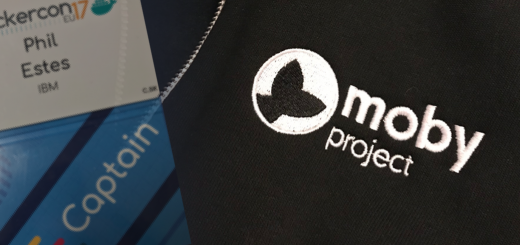
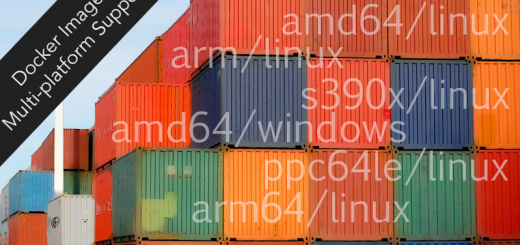
Recent Comments